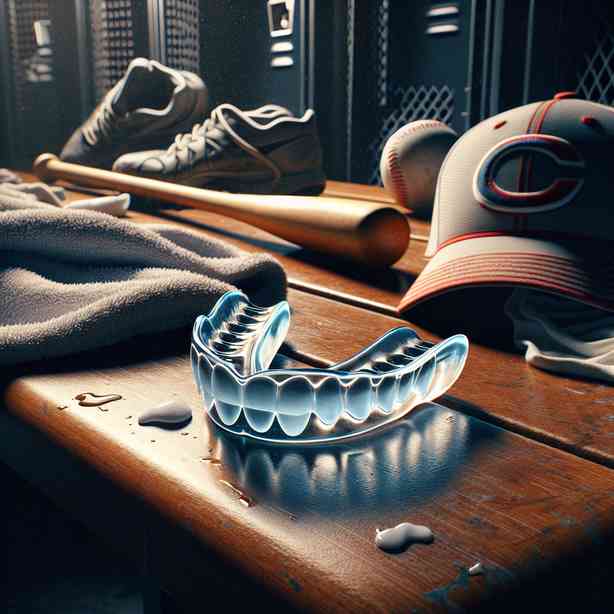
Using a mouthguard is often seen as an essential part of sports safety, protecting athletes from injuries to their teeth, jaw, and even the head. However, many individuals, even those who understand the importance of wearing one, frequently neglect to do so. You may have purchased a mouthguard with the best of intentions, vowing to wear it every time you practice or compete, only to find it collecting dust in your bag. Let’s delve into why these small but mighty dental devices are vital and explore strategies to help you integrate them into your routine.
To begin, it’s important to understand the primary purpose of a mouthguard. Their primary function is to cushion and protect teeth from impact during contact sports like football, boxing, martial arts, and hockey. They also serve to mitigate injuries that can occur in non-contact sports; for instance, a sudden fall during skiing or skateboarding could also lead to serious dental injuries. A well-designed mouthguard acts as a shock absorber, dispersing the force of an impact and minimizing the odds of broken teeth, dislocated jaws, and concussions.
Furthermore, mouthguards are not just for athletes; they can also be beneficial for individuals suffering from bruxism, a condition characterized by teeth grinding. Night guards are a type of mouthguard specially designed for overnight wear, protecting the teeth from wear and tear that can result from grinding. This sort of mouthguard alleviates discomfort in the jaw and can even reduce headaches linked to this condition.
Unfortunately, despite these numerous benefits, many individuals find it challenging to adopt the habit of wearing a mouthguard regularly. One common reason is the discomfort often associated with wearing one during games or practices. An ill-fitting or hard mouthguard can cause gagging or interfere with breathing and speech, making it difficult for athletes to perform at their best. However, it’s vital to remember that there are various types of mouthguards available—ranging from stock types that are pre-formed and ready to wear, to boil-and-bite options that can be customized for a better fit, to prescription mouthguards made by dental professionals. Exploring these options can lead you to a mouthguard that feels comfortable and even protective during your activities.
Another reason that people avoid using mouthguards is the perception that they are an inconvenience. Many athletes feel that wearing a mouthguard will hinder their performance, making it more difficult to communicate with teammates or take deep breaths. However, new advancements in mouthguard technology have led to slimmer profiles and better breathability, addressing many of these concerns. Moreover, just as one wears a helmet for safety and a cup for protection in certain sports, you can think of the mouthguard as an essential part of your equipment that must be integrated into your routine.
To cultivate a habit of wearing a mouthguard consistently, it can be beneficial to set reminders for yourself. Start by placing your mouthguard in a visible location within your sports gear or attaching it to your gym bag. You could also schedule a dedicated time before practices or games to ensure you’re mindful about wearing it. Make it a part of your pre-game ritual—similar to putting on your uniform or stretching. The more integrated the mouthguard becomes in your game-day readiness, the more likely you will remember to wear it.
Additionally, educate those around you about the significance of mouthguards in injury prevention. When teammates or friends express understanding about the risks associated with not wearing one, it reinforces the idea that your well-being is a collective concern. Encouraging others to join you in this protective habit can create a supportive environment where safety becomes a priority.
It is also helpful to stay informed about the latest research and statistics regarding sports injuries. Studies continually reveal the staggering number of dental injuries that occur in contact sports, underscoring the importance of protective gear. Knowing these facts can reaffirm your commitment to wearing a mouthguard.
Once you’ve committed to wearing your mouthguard regularly, it is essential to know how to properly care for it to ensure longevity and effectiveness. Always rinse it with cold water before and after use to eliminate bacteria buildup. Store it in a protective case, preferably one that allows for ventilation, to keep it clean and dry. Avoid exposing your mouthguard to extreme temperatures, as this can alter its shape and fit. Regularly check your mouthguard for signs of wear and tear, and if it no longer fits comfortably or adequately, consider replacing it. This proactive maintenance ensures that your mouthguard functions effectively when you need it most.
In summary, while integrating a mouthguard into your sports routine may seem like a chore, the benefits far outweigh the inconveniences. Protecting your teeth, jaw, and overall health is a commitment that pays off immensely, preventing costly and painful injuries down the road. By familiarizing yourself with different mouthguard options, creating reminders, building a supportive environment with your peers, and practicing good care habits, you can turn your initial commitment into a reliable and lasting routine.
Wearing your mouthguard should become a natural part of your sports experience, just like wearing your jersey or lacing up your shoes. With some effort, you can make it an indispensable part of your protective gear. So the next time you prepare for your sport, remember that the mouthguard you once swore you’d wear isn’t just a piece of equipment; it’s your first line of defense against potential injuries. Prioritize your safety, and wear that mouthguard with pride.


